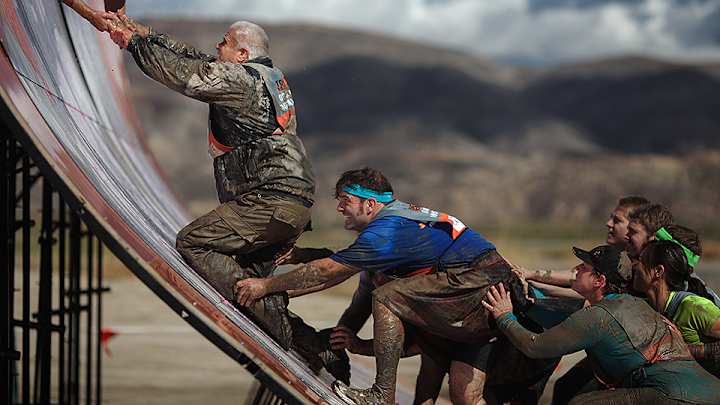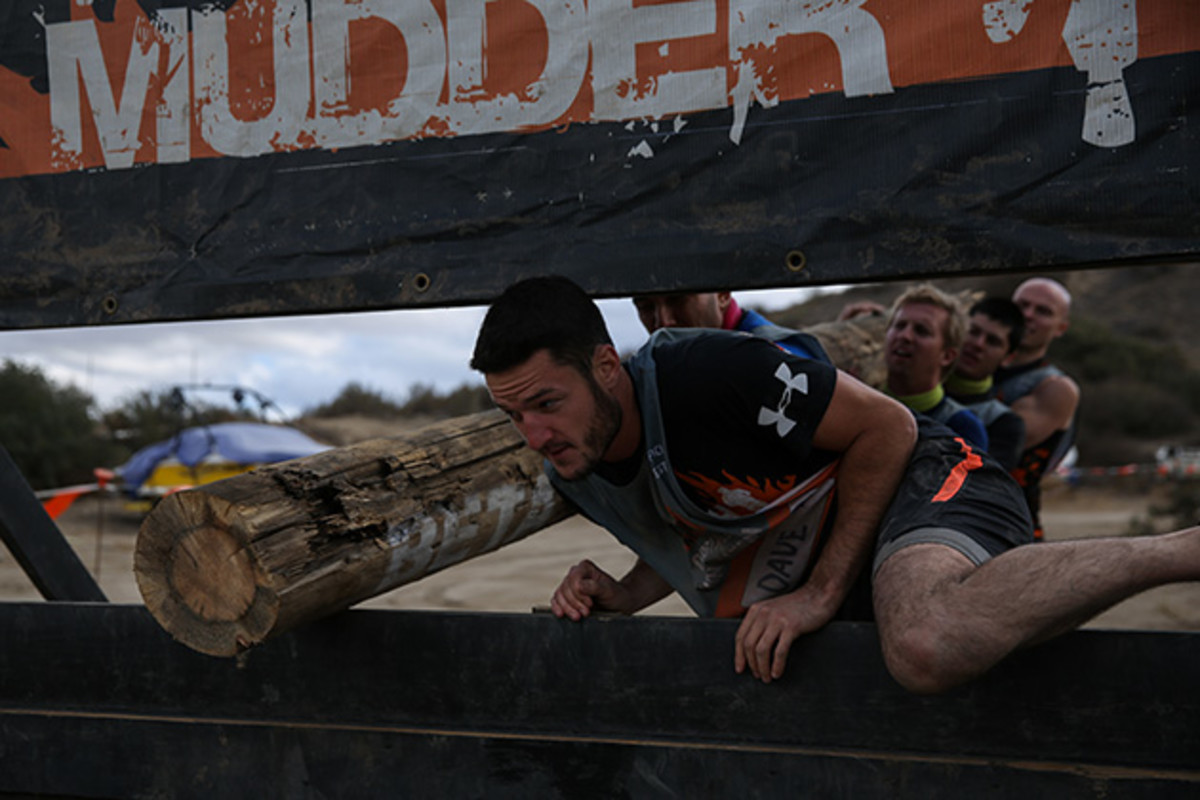Tough Mudder shares the secret to building the perfect obstacle course

The new obstacle courses set to challenge the best of the best in Tough Mudder's endurance races this year focus heavily on teamwork, tenacity and, of course, plenty of tough mud to fight through. You wouldn’t want it any other way, would you?
Plus, with names like Funky Monkey, King of the Swingers and Arctic Enema, we can’t quite get enough of the fun, competitive philosophy that Tough Mudder embodies.
- MORE EDGE: Why your baseball training should include this program
Nolan Kombol, head of course design for Tough Mudder, tells SI.com the 11-month process of reevaluating the group’s 40-plus obstacles was the first broad sweep of changes in course history. While getting a look at the secrets behind the new obstacles, we also get a peek at some ways to prep for a 2015 Tough Mudder. It looks quite different from 2014, with 12 new courses and 10 others completely updated for designers to pull from when building a typical 20- to 25-obstacle Tough Mudder event.
What's new in 2015? More teamwork and unique experiences for racers. Take the Hold Your Wood obstacle, for example. On the menu for about four years, wood logs of about 40 pounds must get carried over rugged terrain. Some people take on the task themselves, while others team up. Well, that individual-based obstacle is gone now.
Training with Evan Longoria: Inside the Rays' 3B's preseason workout
“We exchanged all smaller logs for 200 to 250 pound logs that teams of five to seven will have to carry,” Kombol says. And they won’t just carry them straight. Teams must go through a small hole, and over a wall to complete the task.
Speaking of walls, Everest has grown too. Tough Mudder added another two feet—bringing the top of the wall to about 13.5 feet. A new water feature flowing down the front of it will promote the need for teamwork to get over the top, which was rounded to make it easier to gain a foothold and help others.
With water a key feature throughout Tough Mudder courses, Kombol says they added more of a splash this year. Now instead of participants simply lowering into the ice bath obstacle, there is a 5-foot slide to plunge you directly into the water, where you are forced under before meeting a wall in the middle of the freezing cold obstacle.
As far as splashes go, though, the most dramatic may come with the King of the Swingers obstacle: a rope swing off a 12-foot platform into a 12-foot pool of water. Participants swing out about 15 feet and try to hit and ring a bell suspended over the water.

“It is very visual, very spectator friendly,” Kombol says. “Massive groups try to reach for the bell and land in awkward belly flops and Michael Jordan-type poses.”
And while building something like the King of Swingers, or even Everest, at home could prove tricky, one new obstacl—the Liberator—lends itself to some do-it-yourself practice at home. This 12-foot wall on the course has peg holes on it, similar to what you may find in a gym. Participants pick up pegs from the ground and use the pegs to get over the top, a direct upper body lift on the nearly vertical wall.
Kombol suggests trying the peg-board action at your local gym, a motion many climbers have mastered. And while he stresses that all Tough Mudder obstacles are highly engineered using structurally sound construction methods, Kombol says that a hardware store visit may help you get ready.
Gary Roberts Q&A: Talking with one of hockey's most revered trainers
Build a solidy constructed wall, place peg holes in it and get to work on your upper body. A peg board wall—with pegs, of course—will not only help with the Liberator, but can also be a small prep for the Everest and Berlin Wall, a new 10-foot high obstacle.
“Practice getting over as an individual and as a team,” Kombol suggests.
If you’ve already added a peg-board wall to your repertoire, don’t stop there. “A basic monkey bar set would be a great addition to the backyard,” Kombol says.
The Funky Monkey obstacle requires full playground style when crossing the monkey bars, which Kombol suggests doing two or three bars at a time.
“Make a gap, develop that agility and strength,” says Kombol.
Whether you build obstacles or not is up to you, but Kombol also recommends practicing with real wood. “Get out and train with your team,” he says. And on your three- to five-mile training run, have logs placed along the route for practice. Weighted lunges and weighted squats will also help.
So does a creek or pond.
Behind the Body: Tampa Bay Lightning's center Steven Stamkos
“I definitely think getting your body in regular condition for cold, wet and muddy conditions is something you should prep for,” Kombol says. “A lot of times I will wake up for my 5 a.m. six-mile run and part of my run is to jump into a creek or pond along the route. Find that along the run to feel briskness and to get your body used to running with water on you.
“The more your body gets used to that, the better you are going to be in a Tough Mudder.”
Of the 32 Tough Mudders scheduled in North America, not counting those internationally, expect to face Everest, Arctic Enema—swimming through a container of ice—and Electroshock Therapy on every one.
And, oh, as far as one obstacle not to try at home, that would be the Electroshock Therapy, a network of lives wires strung through a mud pit. “Save that one for the day of," says Kombol.
Tim Newcomb covers stadiums, design and gear for Sports Illustrated. Follow him on Twitter at @tdnewcomb.
